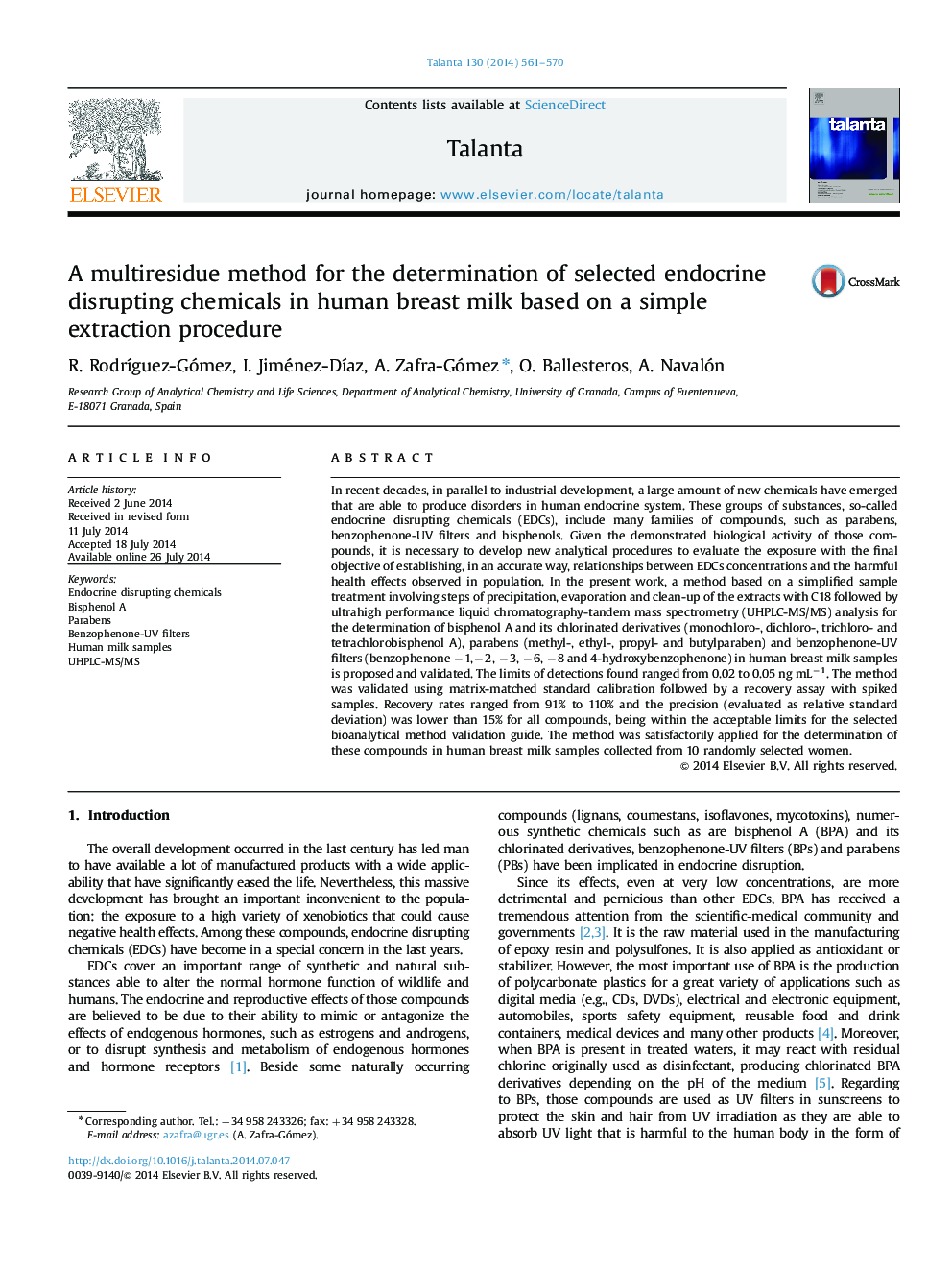| Article ID | Journal | Published Year | Pages | File Type |
|---|---|---|---|---|
| 1243629 | Talanta | 2014 | 10 Pages |
•The determination of three families of EDCs in human milk samples is developed.•A simple treatment of human milk for isolation of EDCs from samples is proposed.•UHPLC-MS/MS is used as analytical technique to measure the target compounds.•The method was satisfactorily validated and applied to human breast milk samples.
In recent decades, in parallel to industrial development, a large amount of new chemicals have emerged that are able to produce disorders in human endocrine system. These groups of substances, so-called endocrine disrupting chemicals (EDCs), include many families of compounds, such as parabens, benzophenone-UV filters and bisphenols. Given the demonstrated biological activity of those compounds, it is necessary to develop new analytical procedures to evaluate the exposure with the final objective of establishing, in an accurate way, relationships between EDCs concentrations and the harmful health effects observed in population. In the present work, a method based on a simplified sample treatment involving steps of precipitation, evaporation and clean-up of the extracts with C18 followed by ultrahigh performance liquid chromatography-tandem mass spectrometry (UHPLC-MS/MS) analysis for the determination of bisphenol A and its chlorinated derivatives (monochloro-, dichloro-, trichloro- and tetrachlorobisphenol A), parabens (methyl-, ethyl-, propyl- and butylparaben) and benzophenone-UV filters (benzophenone −1,−2, −3, −6, −8 and 4-hydroxybenzophenone) in human breast milk samples is proposed and validated. The limits of detections found ranged from 0.02 to 0.05 ng mL−1. The method was validated using matrix-matched standard calibration followed by a recovery assay with spiked samples. Recovery rates ranged from 91% to 110% and the precision (evaluated as relative standard deviation) was lower than 15% for all compounds, being within the acceptable limits for the selected bioanalytical method validation guide. The method was satisfactorily applied for the determination of these compounds in human breast milk samples collected from 10 randomly selected women.
Graphical abstractFigure optionsDownload full-size imageDownload as PowerPoint slide
